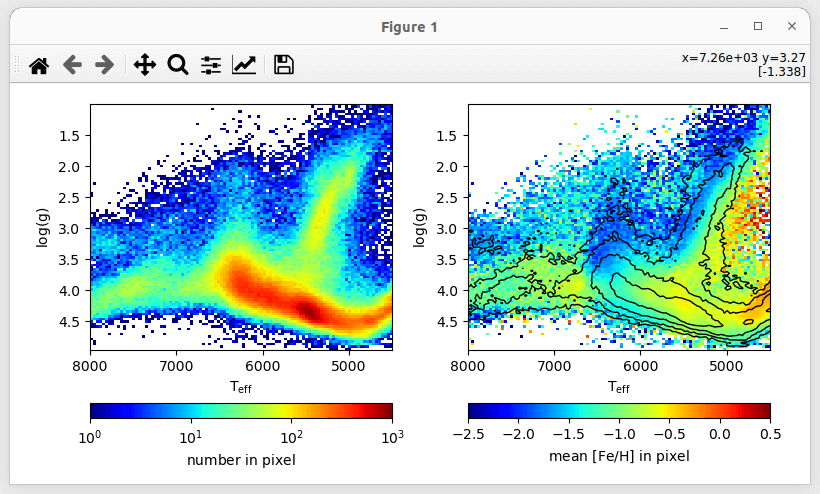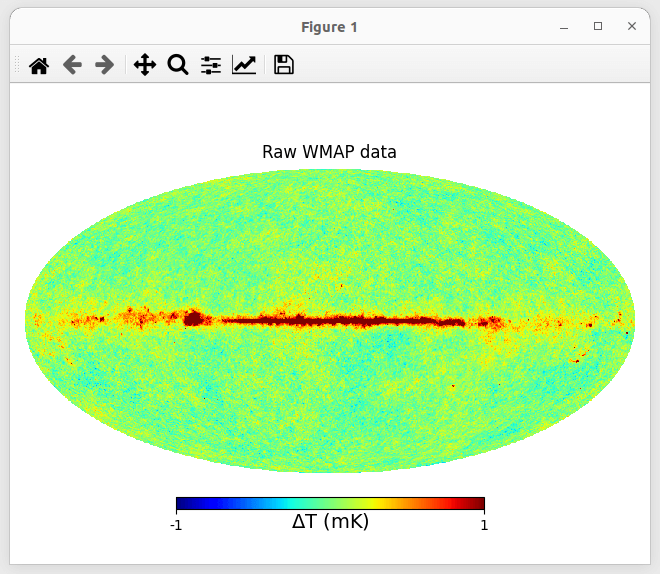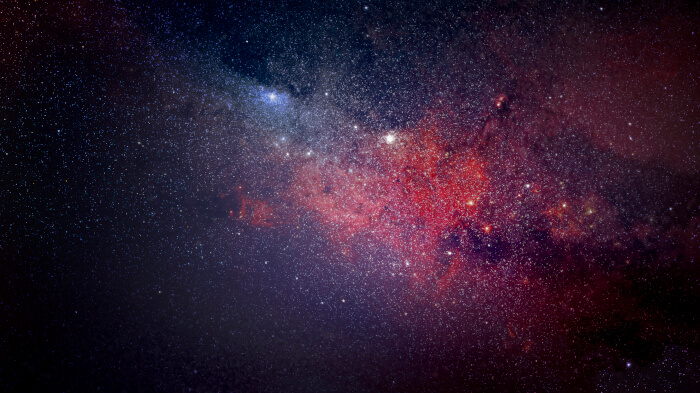Last Updated on March 6, 2023
In Operation
A good way to start learning how to use the astroML module is to work through some of the many examples on the project’s website.
For example, let’s walkthrough the example which creates Hess diagrams of the Segue Stellar Parameters Pipeline (SSPP) data to show multiple features on a single plot.
Download the code using wget:
$ wget https://www.astroml.org/_downloads/33dfbd7e30005f392c3f866223a621d2/plot_SDSS_SSPP.py
Here’s the matplotlib output from the command:
$ python plot_SDSS_SSPP.py

How about WMAP plotting with HEALPix? This uses the astromL.datasets.fetch_wmap_temperatures() functionality to download and plot the raw WMAP 7-year data.
We need to install the HEALPy package (an interface to the HEALPix pixelization scheme, as well as fast spherical harmonic transforms).
$ pip install healpy
Now’ll use wget again to download the Python code.
$ wget https://www.astroml.org/_downloads/7608268ca4f0563da5ca8ca87b372ce0/plot_wmap_raw.py
Here’s the matplotlib output from the command:
$ python plot_wmap_raw.py

Here’s a summary of the tools which astroML offers:
- Download and work with astronomical data sets.
- Histogram tools.
- Density estimation.
- Linear regression and fitting.
- Time series analysis:
- Periodic time series.
- Aperiodic time series.
- Statistical functions.
- Dimensionality reduction.
- Correlation functions – AstroML implements a fast correlation function estimator based on the scikit-learn BallTree and KDTree data structures.
- Filters.
- Fourier and Wavelet transforms.
- Luminosity functions.
- Classification.
- Resampling.
Summary
astroML is a treasure trove of statistical and machine learning routines for analyzing astronomical data in Python, loaders for several open astronomical datasets, and a large range of examples of analyzing and visualizing astronomical datasets. It extends the functionality offered by general-purpose libraries such as NumPy and SciPy.
The project provides multiple examples for deep learning using astronomical data.
Using astroML in conjunction with the awesome NumPy, SciPy, Astropy, and scikit-image will require some knowledge and experience. But these tools let you analyse the huge quantity of astronomical data and generate some amazing output.
astroML uses data from the Sloan Digital Sky Survey (SDSS), a decade-plus photometric and spectroscopic survey at the Apache Point Observatory in New Mexico.
Website: www.astroml.org
Support: GitHub Code Repository
Developer: Jacob Vanderplas
License: BSD 2-Clause “Simplified” License
astroML is written in Python. Learn Python with our recommended free books and free tutorials.
![]() For other useful open source apps that use machine learning/deep learning, we’ve compiled this roundup.
For other useful open source apps that use machine learning/deep learning, we’ve compiled this roundup.
Pages in this article:
Page 1 – Introduction and Installation
Page 2 – In Operation and Summary

Python is serial task execution language so all python based solution for ML and NN’s are slow and that’s a fact. Is very hard next to impossible to a play hardware acceleration, using CUDA only if u code it for your self. Data mining is useless without hardware acceleration. Knime, RapidMiner, MatLab and some other solutions use it, others do not and that’s something to consider if one want hardware performance and no one tells u about. Everything python based is a non performance toy suitable for playing around with small datasets, great to start with. As soon one need performance python is not the answer. Until developers doesn’t speed up the code and add parallelism and hardware CPU+GPU hybridization to the system. Using CUDA with python also very very hard.
I stopped reading after your egregious assertion that python ML and NN are slow. What a load of baloney.